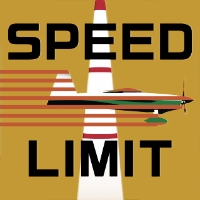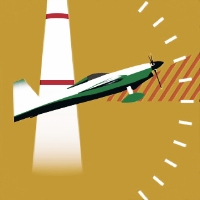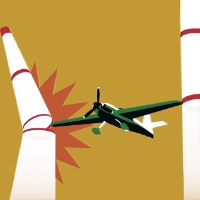RACE RULE
RULE
AIR RACE X is an aerial motorsport utilizing the latest technologies.
Pilots with the world’s best flying skills compete remotely in terms of precision and time in operating race-specialized aircraft under extreme conditions of up to 400 km/h top speeds and up to 12G of acceleration forces.
Pilots will fly actual racetracks set up at various locations globally, competing for best times in a remote format.
This is achievable using precise flight data collected by sensors mounted on their aircraft, accurate to a 3 cm margin of error.
Despite being a remote competition, the intense race for 1/1000th of a second developments were made possible by AIR RACE X’s high-precision flight data measurement technology, a unique algorithm that automatically assigns handicap times based on flight location and weather information.
PENALTIES
-

Exceeding Start Speed
GPS ground speed exceeds Maximum Start Speed published for the Racetrack.
*Penalty : Not more than 3kt / 1 sec, 3kt or more DNF
-

Climbing in the Gate
Flight path angle exceeds 10 degrees of climb while passing the gate
*Penalty : 2 sec
-

Pylon Hit
*Penalty : 3 sec
-

Over G
Exceeding Maximum Load Factor, RDU records any Load Factor greater than 12 G. Pilot must land immediately and inspect the aircraft before next flight.
*Penalty : DNF
-
Descending in the Gate
Flight path angle exceeds 5 degrees of descent while passing the gate
*Penalty : 2 sec
-
Incorrect HIGH Turn
Flight path does not reach 500 ft. above Track Baseline between Turn gate and Recovery Gate.
*Penalty : 2 sec
-
Incorrect LOW Turn
Flight path does not reach 250 ft. above Track Baseline between Turn gate and Recovery Gate.
*Penalty : 2 sec
-
Incorrect Vertical Roll
Flight path does not reach 700 ft above Track Baseline, or does not rotate at least 315 degrees around its longitudinal axis before crossing the plane of the “Turn Gate”
*Penalty : 3 sec
-
Course Deviation
Flight path deviates laterally beyond the Pylon Hit detection area.
*Penalty : DNF
-
Safety Climb Out(SCO)
If more than 30 seconds has elapsed without a gate passage being detected.
*Penalty : DNF
VIEW ALL
